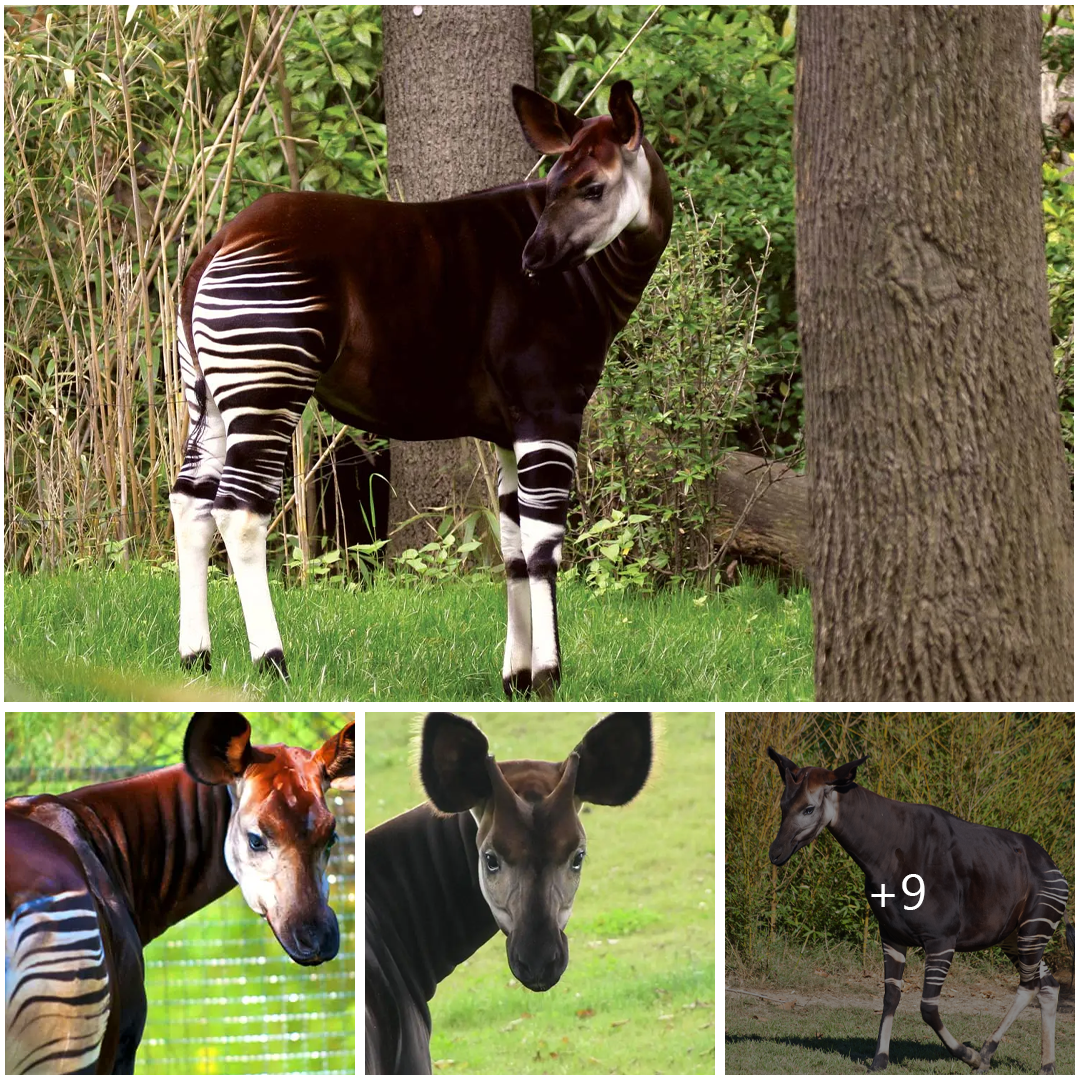
Discovering the Enigmatic Okapi: Africa’s Elusive Forest Giraffe
The Okapi (Okapia johnstoni) is a fascinating and enigmatic creature often referred to as the “forest giraffe” due to its long neck and striped coat reminiscent of its distant relative, the giraffe. Native to the dense rainforests of the Democratic Republic of Congo (DRC) in Central Africa, the Okapi remains one of the most elusive and least-known species in the animal kingdom.
Physical Characteristics:
The Okapi possesses a unique appearance characterized by its chocolate-brown fur and distinctive white stripes on its hindquarters and legs. These stripes act as effective camouflage amidst the dappled sunlight and shadows of the dense rainforest, providing the Okapi with protection from predators such as leopards and pythons.
In addition to its striking coat pattern, the Okapi features large, flexible ears and a long, prehensile tongue—traits that help it navigate its forest habitat and reach foliage high above the forest floor. Despite its giraffe-like appearance, the Okapi is actually more closely related to the humble domesticated horse.
Habitat and Distribution:
Okapis are endemic to the dense, lowland rainforests of the northeastern DRC, where they inhabit a range of forest types, including both primary and secondary forests. Their preferred habitat consists of dense undergrowth and thick vegetation, providing ample cover and access to a diverse array of food sources.
Due to their secretive nature and the remote and inaccessible nature of their habitat, Okapis are seldom seen in the wild, making them one of the most elusive and poorly understood large mammals in Africa.
Behavior and Diet:
As primarily solitary and crepuscular creatures, Okapis are most active during the early morning and late afternoon hours, when they forage for leaves, buds, fruits, and other vegetation. Their long tongues allow them to strip leaves from branches and reach into crevices to extract food—a skill honed over millions of years of evolution in the dense rainforest environment.
Despite their solitary tendencies, Okapis are known to communicate through a variety of vocalizations, including whistles, bleats, and even infrasound—a low-frequency sound that can travel long distances through dense vegetation.
Conservation Status:
The Okapi faces numerous threats to its survival, including habitat loss due to deforestation, hunting for bushmeat, and political instability in the DRC. As a result, the species is classified as Endangered on the International Union for Conservation of Nature (IUCN) Red List of Threatened Species.
Conservation efforts focused on protecting the Okapi’s remaining forest habitat, implementing anti-poaching measures, and raising awareness about the species’ plight are crucial for ensuring its long-term survival in the wild.
Conclusion:
In the depths of the Congolese rainforest, the Okapi remains a symbol of mystery and wonder—a testament to the resilience and adaptability of nature’s creations. By preserving its forest habitat and safeguarding its future, we can ensure that future generations will continue to marvel at the beauty and uniqueness of this remarkable forest-dwelling giraffe.





